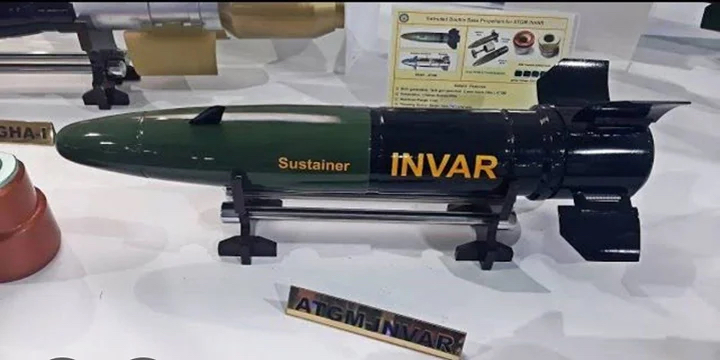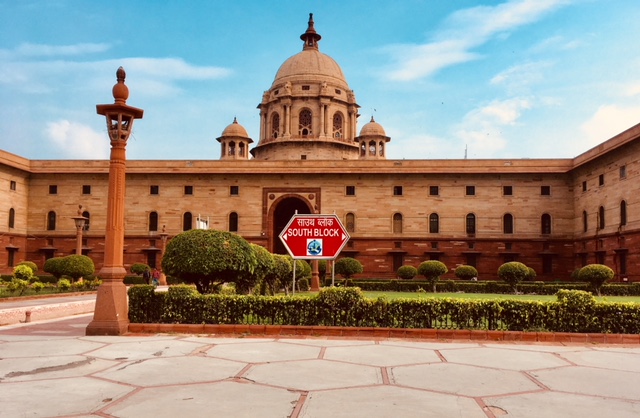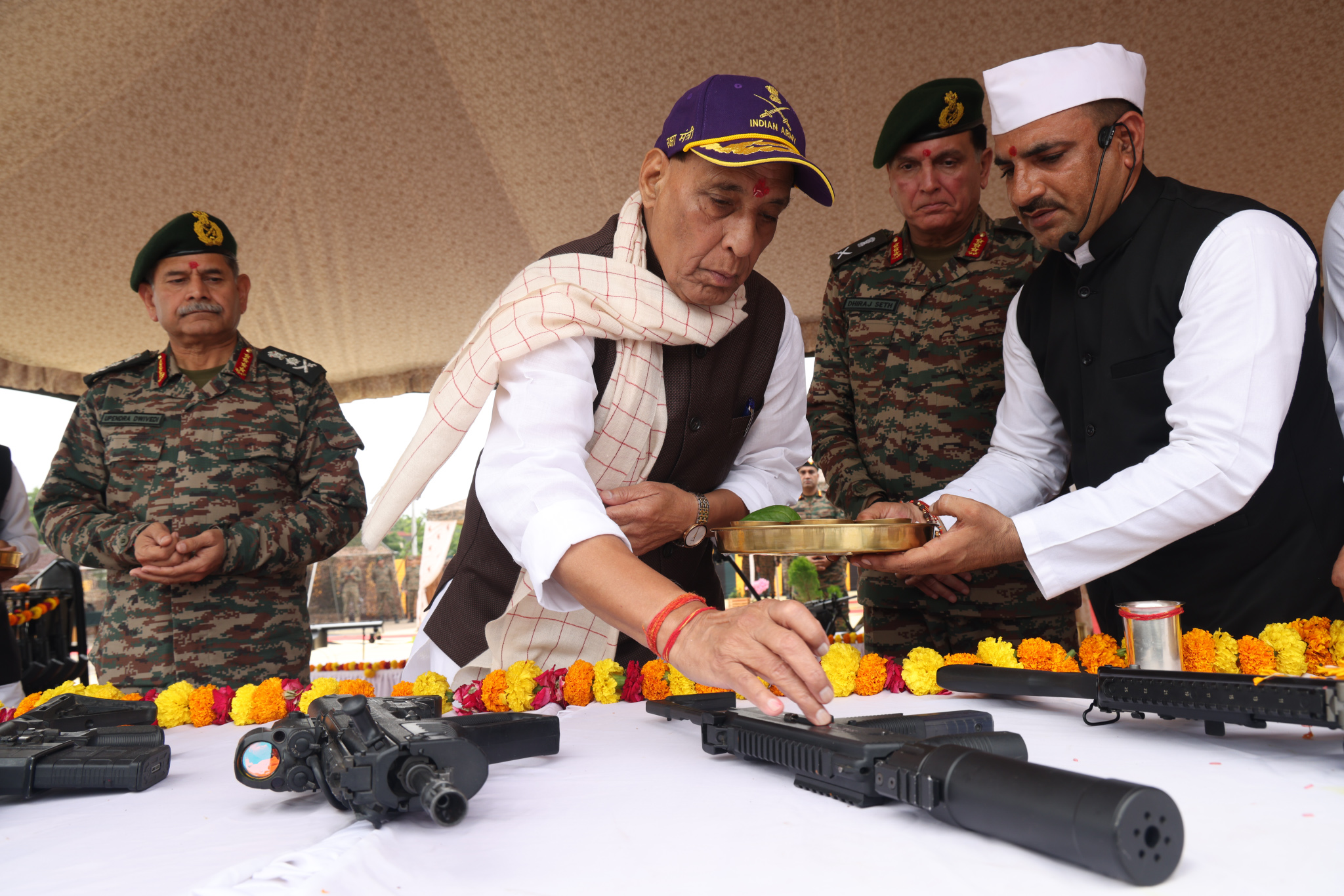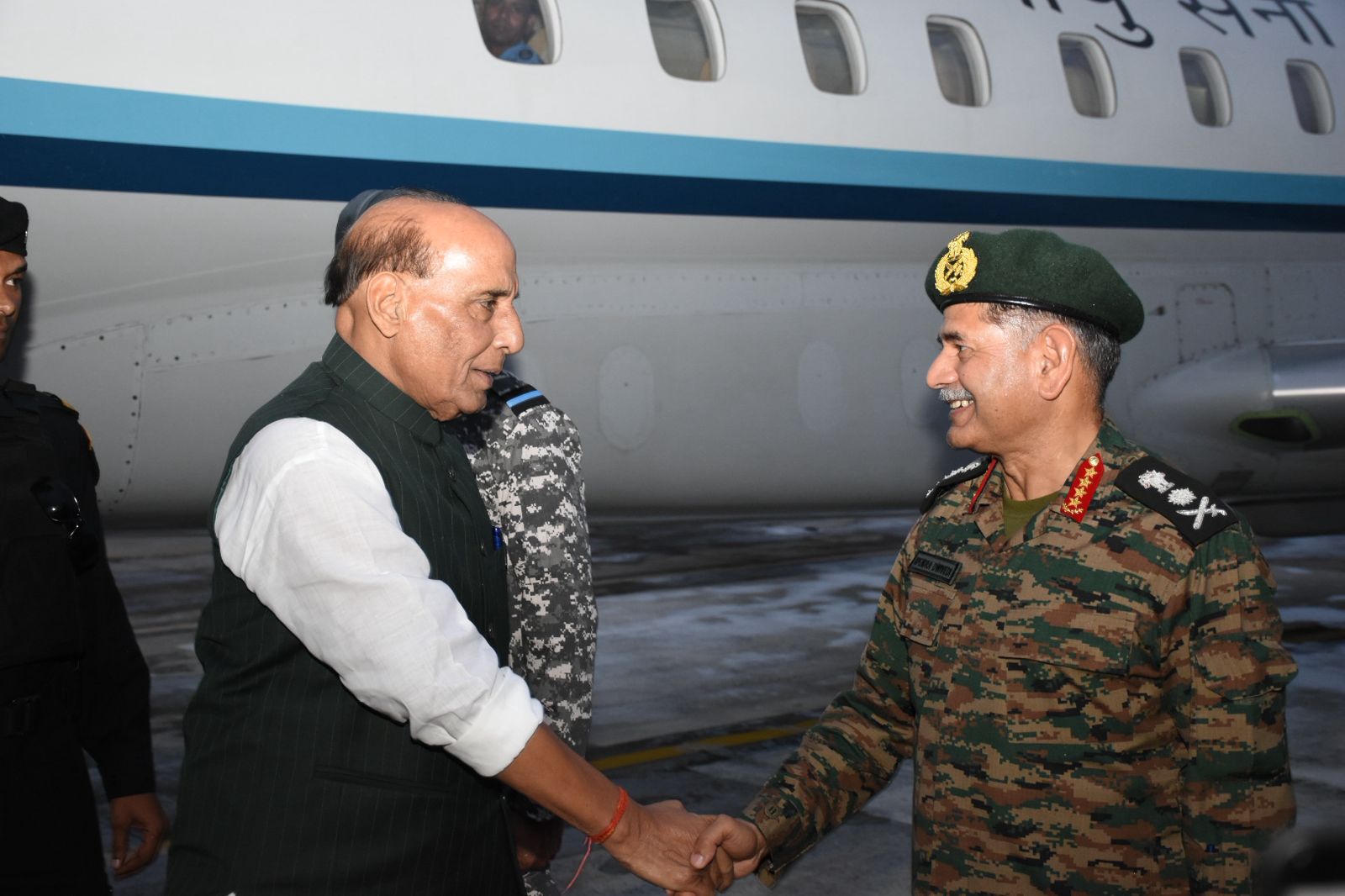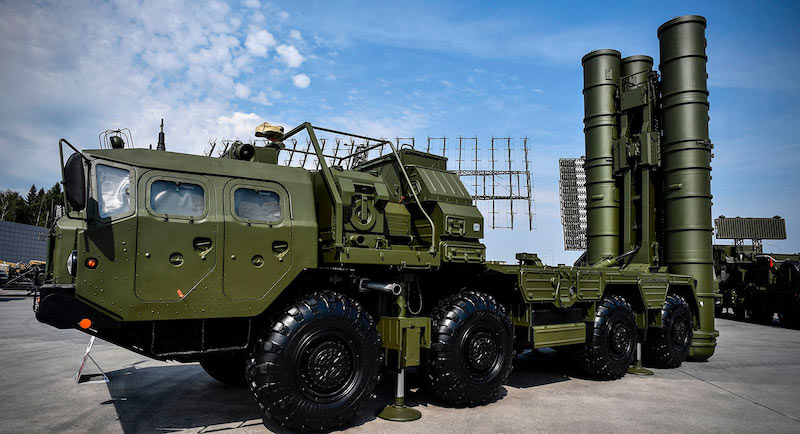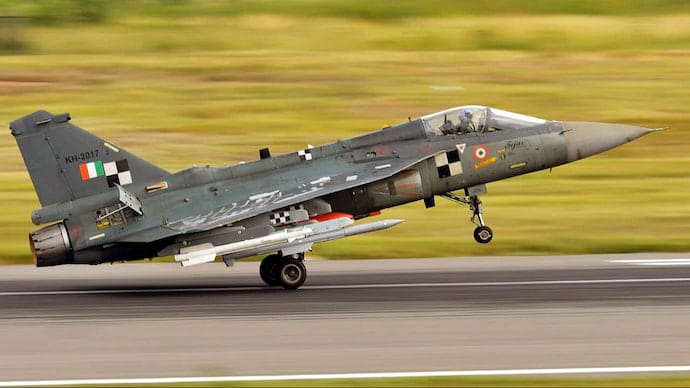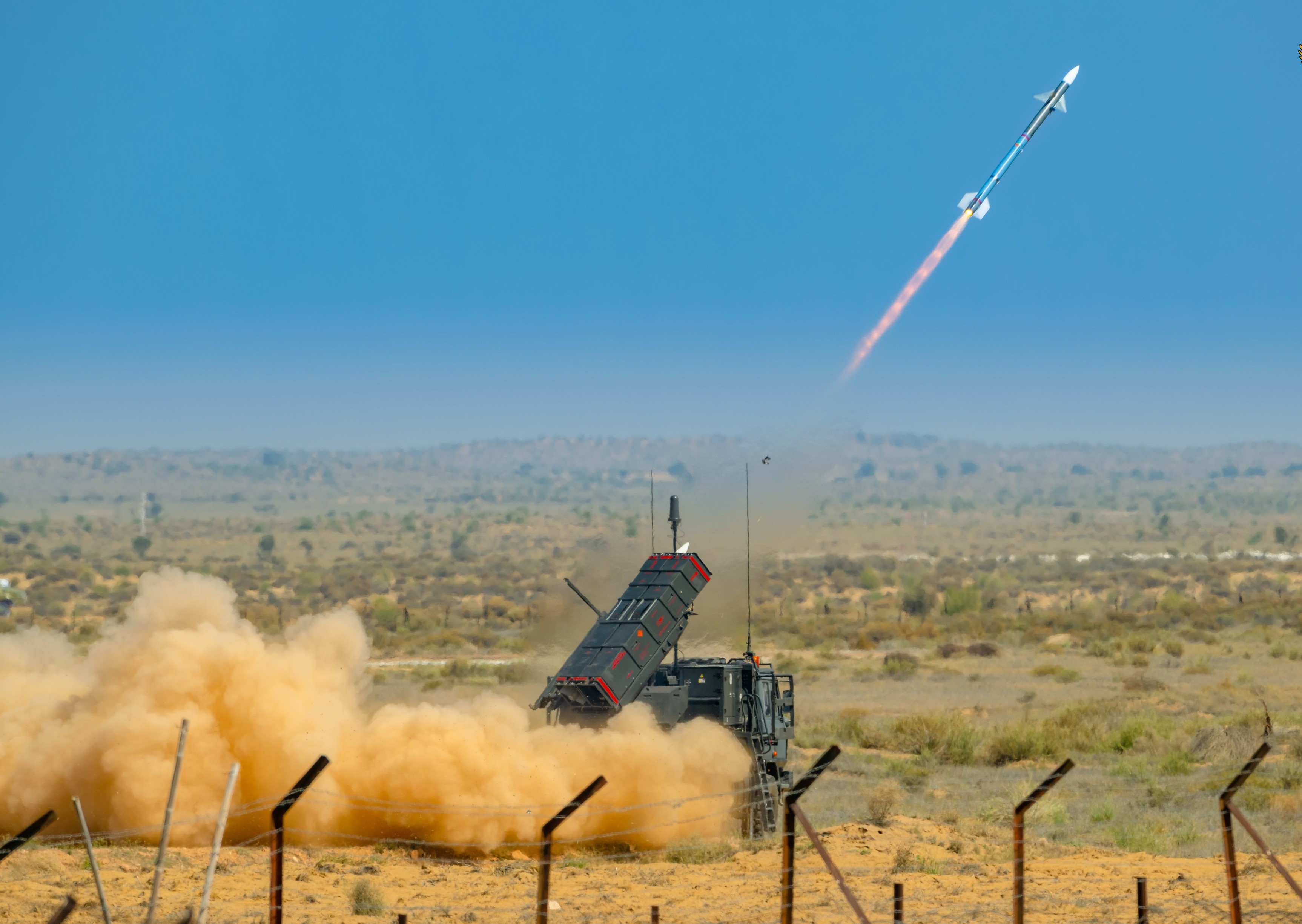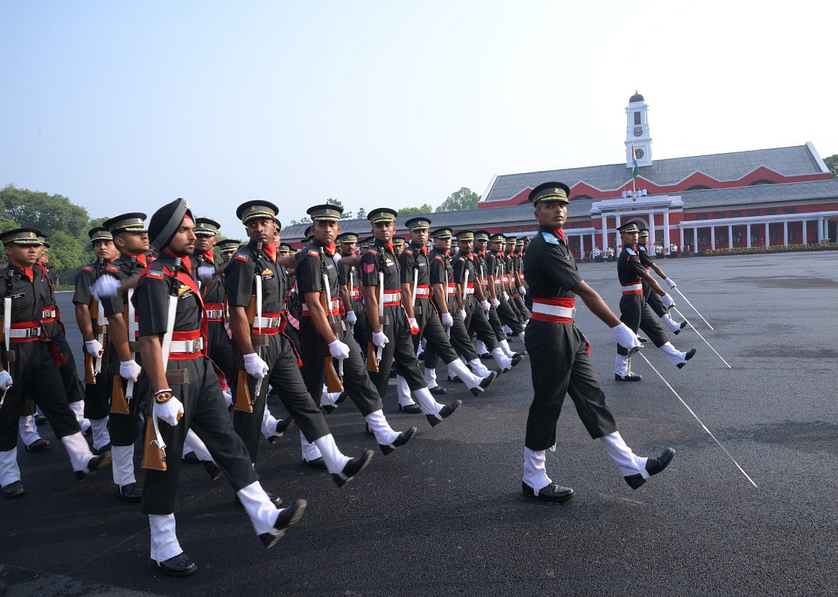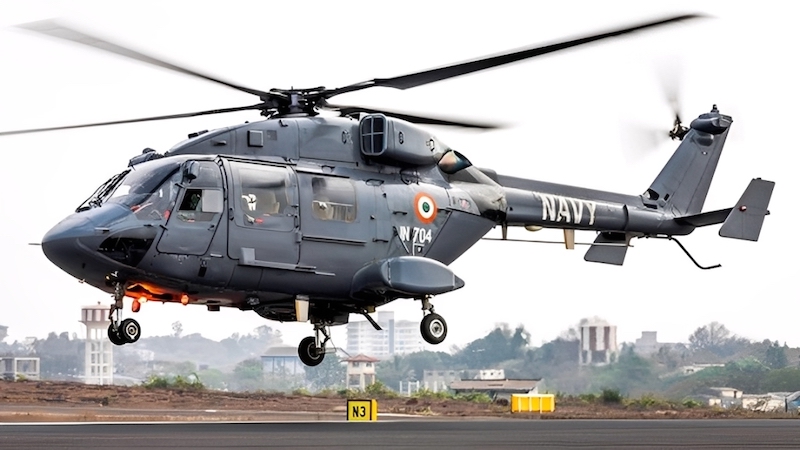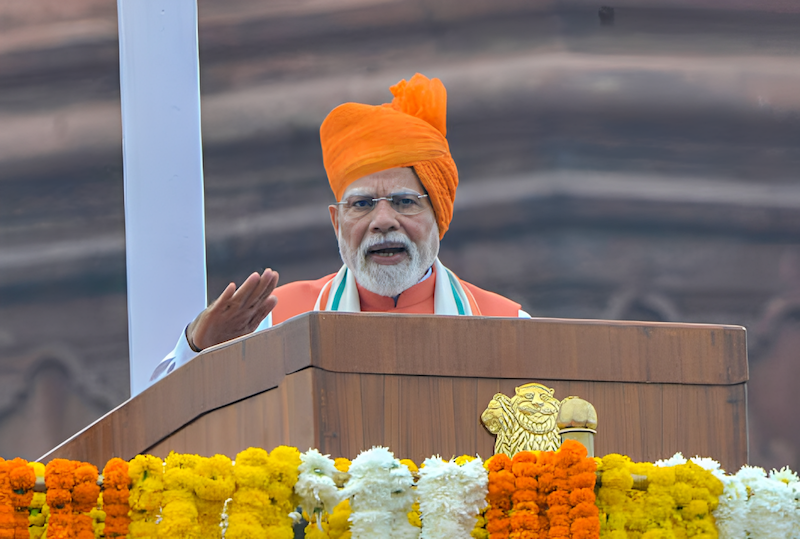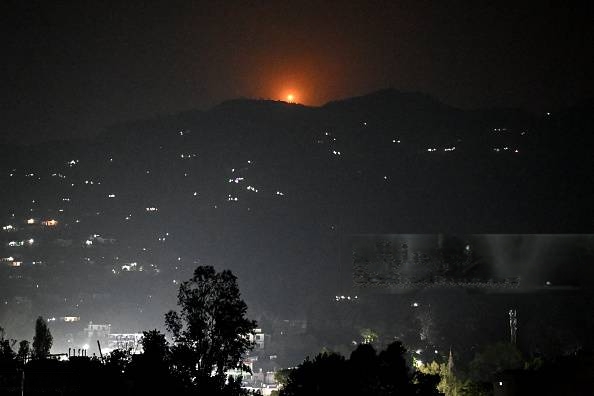 A fire seen at a distance caused by Pakistani artillery firing on a civilian area in Poonch town. (Photo via FB)
A fire seen at a distance caused by Pakistani artillery firing on a civilian area in Poonch town. (Photo via FB)
New Delhi: The tense and volatile situation between India and Pakistan deteriorated sharply on Thursday evening as both nuclear-armed neighbours engaged in significant military action across multiple fronts, marking one of the most serious escalations in decades. This comes after India carried out targeted attacks on terror infrastructure across Pakistan and Pakistan-occupied Kashmir in a military action, codenamed Operation Sindoor, on the intervening night of May 6 and 7.
As reported earlier, India launched Operation Sindoor in retaliation for the Pahalgam terror attack on tourists, on April 22.
In the operation, terror group Jaish-e-Muhammed’s leader Masood Azhar lost 10 members of his family, including his brother Abdul Rauf Azhar – a top terrorist, when the Indian military destroyed a terror camp in Bahawalpur in Pakistan’s heartland province of Punjab.
Rauf was believed to have masterminded the 1999 Kandahar hijacking that led to the release of Masood Azhar from Indian custody. Intelligence sources also linked him to the murder of American journalist Daniel Pearl after kidnapping him from Karachi in early 2002.
Pakistani response
The Pakistani response came swiftly, with the country’s prime minister, Shehbaz Sharif, vowing retaliation for Indian strikes. In a rare show of political unity, Pakistan’s parliament authorized the military to take “appropriate actions” in self-defence.
Following India’s initial operation, Pakistani forces launched coordinated drone and missile attacks targeting Indian military stations in Jammu & Kashmir, Punjab, Chandigarh, Rajasthan, and Gujarat, which the Indian military thwarted and hit back at Pakistan’s air defences in retaliation, as India Sentinels reported on Thursday.
However, as darkness fell on Thursday, Pakistan again attacked Indian military sites in Jammu & Kashmir, Punjab, and other border areas with missiles and drones. According to sources in the Ministry of Defence, the assault, which intensified at around 8.40pm, primarily targeted installations in Jammu, Pathankot, Udhampur, and Amritsar.
Indian air-defence systems, including the advanced Russian-made S-400 “Sudarshan” anti-access/air-defence system, were immediately activated, with official reports claiming all incoming drones and missiles were successfully intercepted before they could reach their intended military targets. According to credible reports, the S-400 A2/AD system thwarted drone, aircraft, and missile attacks on Indian military installations with 100% success.
At least two Pakistani drones were neutralized in Rajouri district’s Naushera sector in Jammu division and a few in Punjab’s Bathinda.
“Our air-defence network functioned with precision as designed,” a senior defence official told reporters on condition of anonymity. “We had intelligence about possible hostile action and were prepared.”
There have also been reports that India’s air-defence systems have downed several incoming Pakistani missiles and at least one fighter jet. However, India Sentinels cannot verify these reports and similar other claims from both sides of the border independently.
Despite the successful interception of most projectiles, debris and artillery fire resulted in civilian casualties. Army sources confirmed the deaths of at least 15 civilians and injuries to 59 others in the Pakistani cross-border shelling and mortar fire in Jammu & Kashmir, especially in the Poonch sector, as India Sentinels had been reporting from Wednesday. One soldier was also killed during the exchanges.
Indian Counterstrikes
In response to the initial Pakistani assault, Indian forces launched retaliatory drone operations targeting the country’s air defence radars and military infrastructure. The MoD later acknowledged that Indian drones had entered Pakistani airspace with the objective of neutralizing air defence threats, particularly around Lahore.
“A precision operation was conducted to degrade enemy capabilities that posed an imminent threat to our forces and civilian population,” the official statement read. It also claimed that at least one Pakistani air-defence system in Lahore was destroyed during the operation. Defence officials acknowledged that India deployed the advanced Israel-made Harop drones among others.
Pakistani authorities presented contradicting information, claiming their forces intercepted and shot down 25 Indian drones over major cities including Lahore and Karachi. Islamabad reported one civilian fatality and five injuries from drone debris. The Pakistani defence minister, Khawaja Asif, insisted no military installations or air-defence systems in Lahore suffered damage.
It may be noted that both sides have engaged in extensive information campaigns, with claims and counterclaims about the effectiveness of strikes and the true nature of casualties. Independent verification remains challenging due to restricted access to frontline areas and government gags on local authorities and media.
Intensified Artillery Exchanges
Simultaneous to the aerial operations, artillery and mortar exchanges escalated dramatically along the international border and the line of control (LoC) in Jammu & Kashmir. Indian Army officials described the situation as “rapidly deteriorating” with heavy fire exchanged across multiple sectors, especially in Poonch.
The intensification forced thousands of border residents into bunkers or evacuation centres. Local administrators reported unprecedented levels of civilian displacement from villages near the LoC.
“We had to leave everything behind and run,” said Rajinder Singh, a resident of a border village in Jammu district. “The shelling was so intense that we could not risk staying even in the underground bunkers.”
Airports Closed, IPL Match Cancelled
The escalation triggered widespread security measures across northern India, including blackouts and mock drills. Aviation authorities closed 20 airports until at least May 10. This is expected to severely impact civilian travel.
The Indian Premier League match between Punjab Kings and Delhi Capitals at the Himachal Pradesh Cricket Association Stadium in Dharamshala was also called off midway on Thursday. The game was halted when Punjab Kings were at 122/1 in 10.1 overs. The stadium’s floodlights were then turned off to signal the end.
Pakistan also closed Karachi airport and briefly suspended operations at Lahore and Islamabad airports for what officials termed “operational reasons”.
Modi, Rajnath Hold Meetings
Earlier on Thursday, the prime minister, Narendra Modi, convened an emergency high-level security meeting. The government later released a statement on the meeting, which reaffirmed its commitment to “national security, operational readiness, and civilian safety.”
Modi also held telephone conversations with key international leaders and explained India’s position to them. As reported on Thursday, the international reaction to the current situation has been swift, with the United States, United Nations, and other major global powers calling for immediate de-escalation. The US secretary of state, Marco Rubio, reportedly spoke with leaders from both countries, urging restraint and dialogue.
As India Sentinels reported earlier in the day, the defence minister, Rajnath Singh, briefed political leaders from across the spectrum, stating that Indian forces had eliminated “100 terrorists” in recent operations and were fully prepared for any further escalation.
Current Situation
As of now, the crisis has expanded beyond direct military confrontation. Pakistan accused India of repeated airspace violations and of releasing water into the Chenab river in what Islamabad characterized as an “act of war”. This added environmental and resource dimensions to the ongoing conflict, which the Pahalgam terror attack triggered.
At the time of publication of this report, the situation remains highly volatile with both militaries on elevated alert status. Indian military sources maintain that all attempted Pakistani strikes on military stations were successfully thwarted, with no significant damage to Indian military assets.
The defence establishment continues to monitor developments closely, with further diplomatic initiatives expected in the coming hours. However, with airports closed and blackouts imposed in border regions, the risk of further escalation looms large over the subcontinent.

